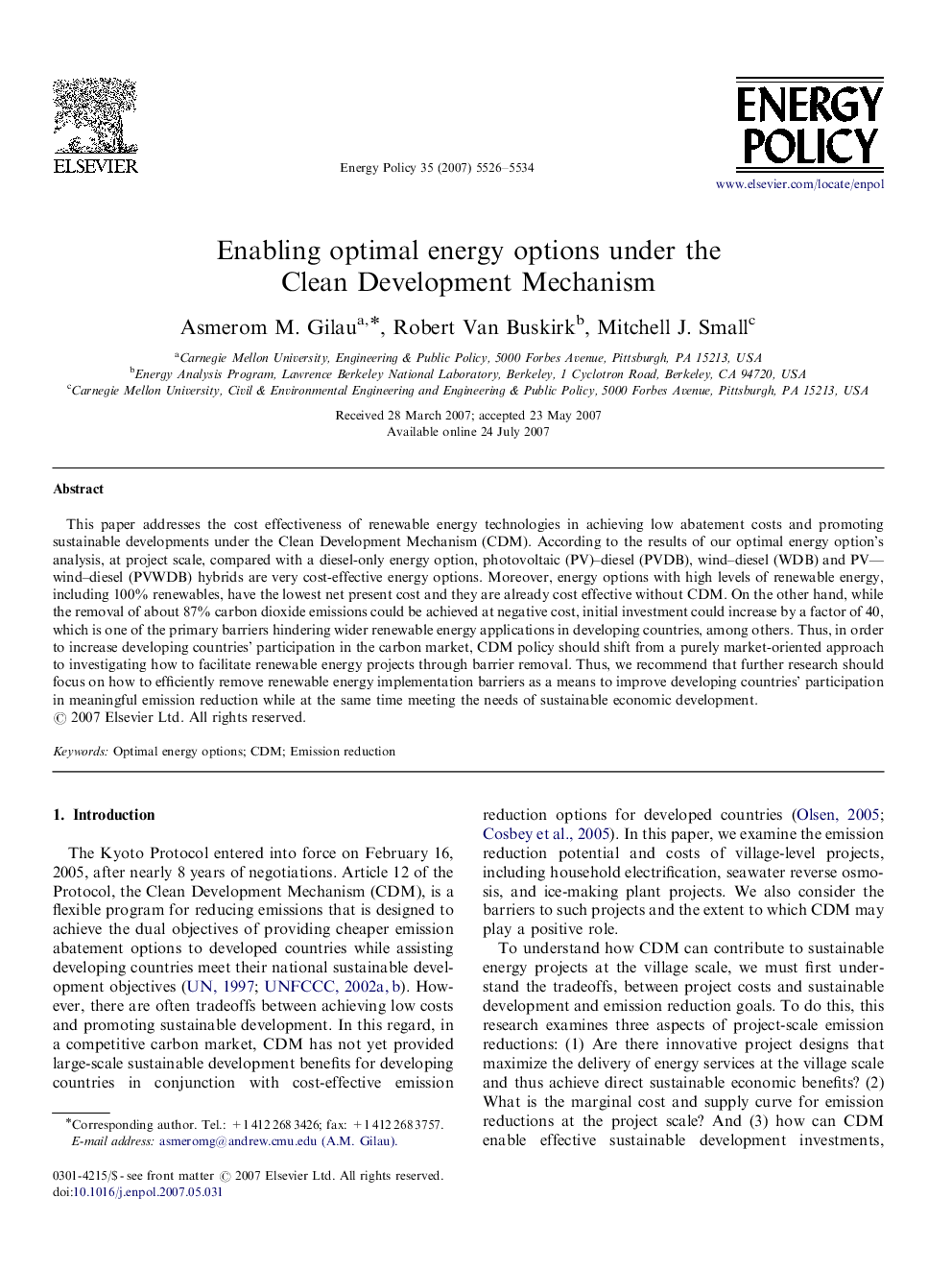| Article ID | Journal | Published Year | Pages | File Type |
|---|---|---|---|---|
| 994189 | Energy Policy | 2007 | 9 Pages |
This paper addresses the cost effectiveness of renewable energy technologies in achieving low abatement costs and promoting sustainable developments under the Clean Development Mechanism (CDM). According to the results of our optimal energy option's analysis, at project scale, compared with a diesel-only energy option, photovoltaic (PV)–diesel (PVDB), wind–diesel (WDB) and PV—wind–diesel (PVWDB) hybrids are very cost-effective energy options. Moreover, energy options with high levels of renewable energy, including 100% renewables, have the lowest net present cost and they are already cost effective without CDM. On the other hand, while the removal of about 87% carbon dioxide emissions could be achieved at negative cost, initial investment could increase by a factor of 40, which is one of the primary barriers hindering wider renewable energy applications in developing countries, among others. Thus, in order to increase developing countries’ participation in the carbon market, CDM policy should shift from a purely market-oriented approach to investigating how to facilitate renewable energy projects through barrier removal. Thus, we recommend that further research should focus on how to efficiently remove renewable energy implementation barriers as a means to improve developing countries’ participation in meaningful emission reduction while at the same time meeting the needs of sustainable economic development.
